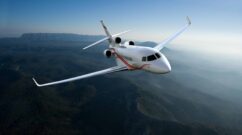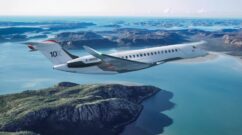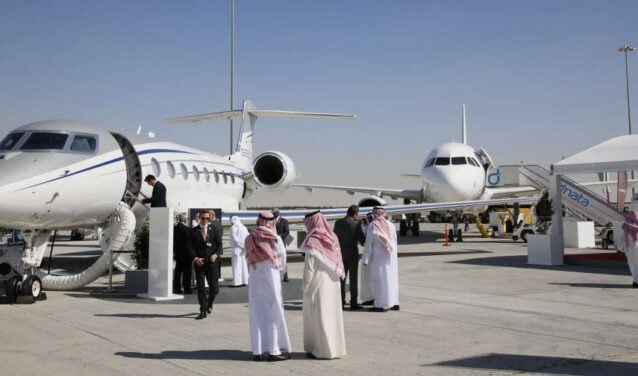The MEBAA Show 2024business Aviation Summit, held in Dubai from December 10 to 12, highlighted the main trends inbusiness aviation in the Middle East. This major event revealed a rapidly expanding market, propelled by growing demand, technological innovations and massive investment in airport infrastructure.
The Middle East market has been at theforefront of this rapid global increase in business aviation. The global private jet market is expected to reach $39.84 billion in 2025, up from around $25.87 billion in 2021, with the GCC region accounting for a large share of this growth.
Within the Middle East, the United Arab Emirates recorded the highest demand for location de jets privés services in 2021, followed by Saudi Arabia. Qatar, Oman and Bahrain are also experiencing increasing growth in this sector.
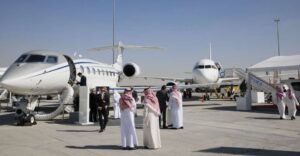
Key trends in business aviation in the Middle East
Sustained demand for luxury and comfort
The Middle East is characterized by a strong preference for luxury business jets, with spacious cabins and long range. This demand is fuelled by an affluent clientele of discerning individuals and businesses looking for an incomparable flying experience.
A fast-growing market
Forecasts for the sector are particularly optimistic, with growth estimates for the Middle East business jet market reaching USD 26.77 billion by 2028. This development reflects the vitality of the sector and its potential for expansion. What’s more, mega-events such asExpo 2020 in Dubai and the World Cup in Qatar have boosted demand for business aviation, a trend that is set to continue in the months ahead.
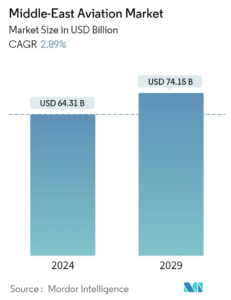
Expanding infrastructure in the Gulf
Gulf countries, particularly Saudi Arabia and the United Arab Emirates, are investing heavily in airport infrastructure. The expansion of hubs such as Jeddah’s King Abdulaziz International Airport and Dubai’s Al Maktoum Airport reinforces the Middle East’s position as a global aviation hub.
Preference for medium and large jets
Demand for gros et moyens jets is particularly strong in the Middle East and Africa. This preference is explained by the long distances between cities and the difficulties associated with ground transportation in the region. Aircraft manufacturers are adapting their product ranges to meet these specific needs.
Towards more sustainable aviation
The business aviation industry is increasingly committed to sustainable aviation. The MEBAA Show 2024 highlighted the efforts of manufacturers and operators to reduce the carbon footprint of business aviation, notably through the use of sustainable aviation fuels and the development of more energy-efficient aircraft.
Technological innovation at the heart of MEBAA Show 2024 strategies
The MEBAA Show 2024 showcased a number of landmark innovations, such as the integration of Starlink on board Qatar Executive‘s Gulfstream G650ER aircraft, enabling high-speed connectivity during the flight, greatly enhancing the passenger experience.
- A spectacular display of aircraft: The 2024 edition of the MEBAA Show was a spectacular event, featuring a wide range of exhibitors from all over the world. Visitors were treated to a dazzling display of state-of-the-artaircraft, including private jets, helicopters and drones. Renowned brands such as Boeing Business Jets, Euro Jet and Dassault Aviation presented their latest models, offering visitors a privileged glimpse of the ultimate in luxury and performance.
- Luxurious private jets and advanced innovations: Beyond static aircraft displays, the MEBAA Show offered exciting features to captivate attendees. Among the most luxurious private jets on display at the 2024 Dubai Air Show were the Vision Jet G2+, the Falcon 6Xthe Gulfstream G700 and the Boeing 767 -200ER.
- BizAv Talks and technological advances: The BizAv Talks section of the show also covered the latest advances in aircraft technology, including electric flight, electric vertical take-off and landing (eVTOL) aircraft, and the future of unmanned aircraft.
Conclusion: the Middle East, a key market for business aviation
The Middle East continues to position itself as a key player in business aviation. With sustained growth, considerable investment in infrastructure, and a strong focus on innovation and sustainability, the region is well set to become a major growth driver for the sector in the years ahead.
The MEBAA Show 2024 confirmed the Middle East’s position as a key market for business aviation. With sustained demand for luxury and comfort, significant investment in infrastructure, and a growing commitment to innovation and sustainability, the region is well positioned to become a major growth driver for the industry in the years to come.
Although the Middle East region remains subject to geopolitical tensions that can affect business aviation operations and growth,business aviation in the Middle East continues to reinvent itself, offering exciting opportunities for industry players and promising an ever more refined and efficient flying experience for its discerning clientele.

